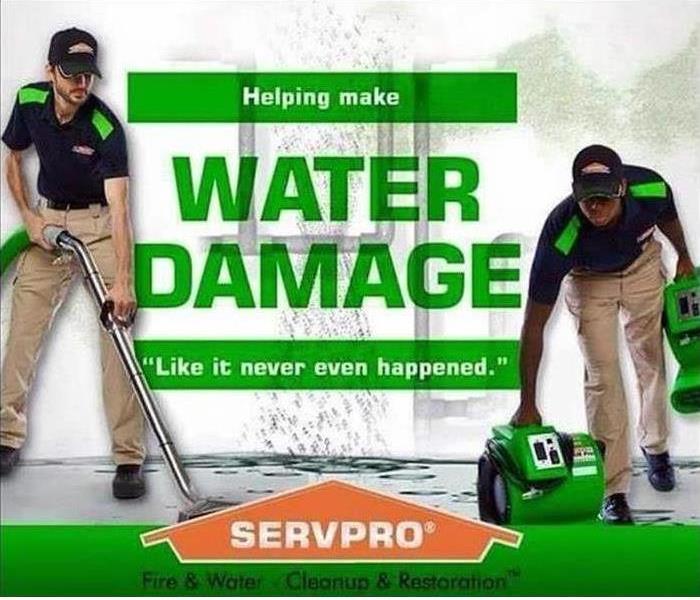Categories of Water
5/23/2023 (Permalink)
How Categories of Water Affect Methods of Restoration- Explained Below.
The many types of water pertain to the water damage's origin and other potential impurities, such as what the water may encounter. The risk that water poses to anything or anybody who comes into contact with it is significantly influenced by how clean the water is.
According to the IICRC's classification of water, the different categories "refer to the extent of contamination in water, taking into account both its source and its quality after it contacts materials present on the job site." Many continue to refer to those categories as Clean, Grey, and Black Water even though they are no longer recognized as official names. When attempting to recall the degree of cleanliness for each category, such terms can be useful.
Category 1
Category 1 water damage, according to the IICRC S500, is defined as water that "originates from a sanitary water source and does not pose a substantial risk from dermal, ingestion, or inhalation exposure." Examples consist of:
- Water delivery systems
- Melting snow/ice
- Toilets with rainwater tanks
- Contaminant-free toilet bowls
"Sanitary water source" and "does not pose a substantial risk" are the essential phrases here. This water is regarded as "clean" as a result. Theoretically, any damaged building material can be salvaged and dried by a restoration specialist like SERVPRO of Fredericksburg. On Category 1 water damage incidents, wet drywall, carpet, pad, hardwood flooring, and more can and are frequently dried and saved.
Category 2
In accordance with the IICRC S500, Category 2 water damage occurrences are those in which the water "contains significant contamination and has the potential to cause discomfort or sickness if contacted or consumed by humans." Examples consist of:
- Washer and dishwasher Migration or overflow
- Urine overflows from the toilet bowl
- Seepage caused by hydrostatic pressure (often in slabs or basements)
- Shattered aquariums
Significantly contaminated water is present in Category 2 water loss from punctured water beds. Make sure your restoration professional removes wet carpet padding and cleans and sanitizes all contaminated objects, including carpet.
Category 3
Category 3 water damage, according to the IICRC S500, is defined as water that is "grossly contaminated and can contain pathogenic, toxigenic, or other harmful agents and can cause significant adverse reactions to humans if contacted or consumed." Category 3 water damage examples include the following:
- Backflows of the sewage waste line coming from outside the trap
- Seawater
- Rising river/stream levels
- Hurricanes and tropical storms' wind-driven rain
Grossly contaminated water is included in Category 3 water losses. All impacted decorative elements, including insulation, hardwood flooring, drywall, carpet padding, and cushions, should be removed by your repair company's contractor.






 24/7 Emergency Service
24/7 Emergency Service
